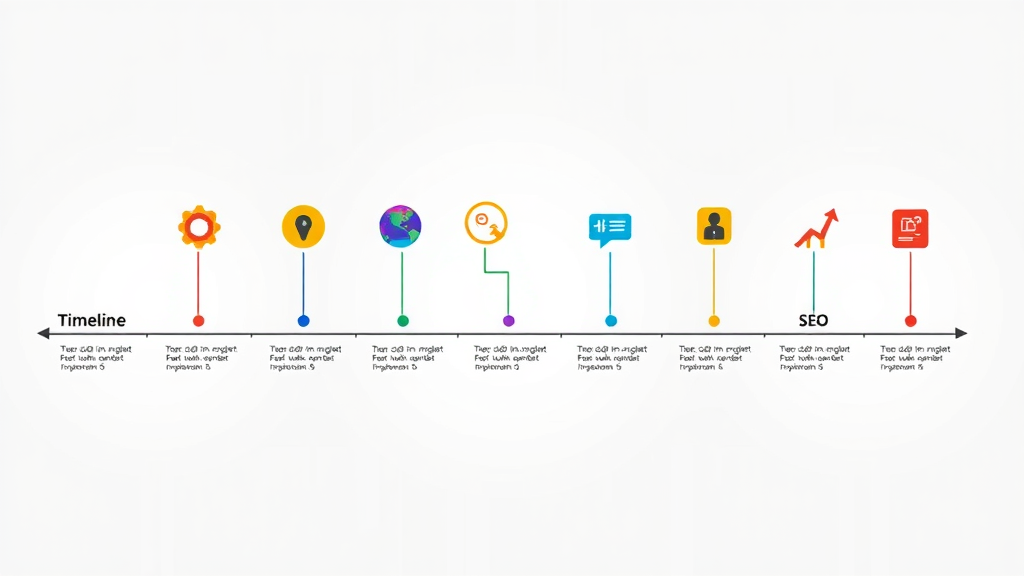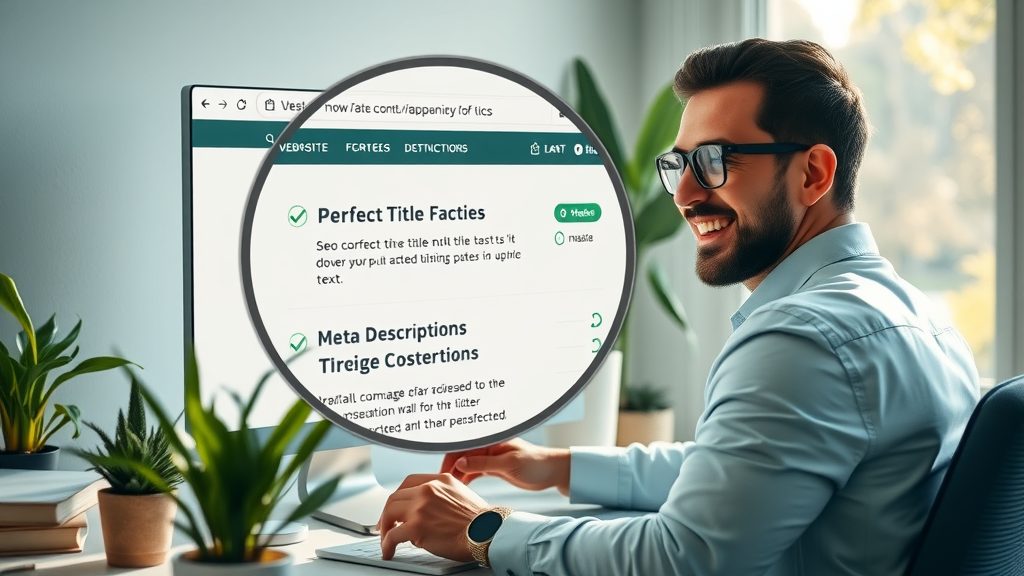Did you know? 93% of all online experiences begin with a search engine. If your brand isn’t capitalizing on SEO content marketing, it’s like opening a shop without a door. This guide delivers practical and effective solutions proven to outrank competitors and drive the results your business deserves—no more waiting.

Start Strong: How SEO Content Marketing Drives Results
"93% of all online experiences begin with a search engine. Ignoring SEO content marketing is like opening a shop without a door."
SEO content marketing is at the heart of online business growth, blending the science of search engine optimization with the art of impactful storytelling. Today’s consumers start their journeys on Google or Bing, which means every blog post, landing page, and product description must be optimized for search intent and user experience. Strategic organizations are using content marketing to connect with precisely the right audience, building trust and authority in search engine results while positioning themselves as leaders in their field. From improved visibility in organic search to higher conversion rates, effective SEO content marketing empowers your brand to cut through digital noise, rank higher, and attract visitors who matter most. The tactics, case studies, and step-by-step workflow shared here will arm you with actionable know-how to transform your content strategy—turning your web traffic and engagement from stagnant to thriving.
Those who implement a thoughtful content strategy paired with meticulous keyword research outperform their competition in both the short and long term. SEO content marketing not only attracts more prospects but converts them, boosts repeat visits, and builds lasting value for your brand’s bottom line. If you want to outsmart, outrank, and outperform your industry peers, understanding and executing SEO content marketing solutions is your first—critical—step.
To further enhance your approach, consider exploring additional content marketing tips that drive massive traffic—these practical insights can help you refine your strategy and achieve even greater results with your SEO efforts.
What You’ll Learn About SEO Content Marketing
- The basics and evolution of SEO content marketing
- Key differences between SEO, content marketing, and SEO content marketing
- How to craft a winning content strategy
- Tools, tips, and tactics for maximizing rankings and engagement
- Proven case studies and actionable insights
Defining SEO Content Marketing for Today’s Marketers

What Is SEO Content Marketing?
Put simply, SEO content marketing is the practice of planning, creating, optimizing, and distributing content to improve its visibility in search engine results and drive valuable organic traffic. While traditional content marketing focuses on storytelling, education, and value, SEO content marketing aligns every word and visual element with the algorithms and ranking factors used by Google Search, Bing, and other engines.
This hybrid approach leverages the power of keyword research, technical search engine optimization (like meta tags and schema), and high-quality, relevant content that both search engines and users find valuable. You’re not just trying to fill a blog post with relevant keywords; you’re creating genuinely helpful, shareable, and engaging assets—everything from how-to guides to landing pages, video content, and infographics. The goal: satisfy search intent, rank better, and convert visitors into loyal customers.
SEO and Content: The Intersection Explained
The best content for SEO is the result of a carefully orchestrated relationship between creativity and analytics. SEO and content marketing are no longer separate silos: they’re inseparable partners. While SEO lays the technical foundation—ensuring crawlability, site speed, and structural clarity—content gives your brand a voice, builds authority, and appeals directly to your target audience.
The intersection means every piece of content is crafted with a dual purpose: to align with what search engines reward and what users crave. This includes creating quality content organized around strategic keywords, relevant topics, and user questions. An effective SEO strategy recognizes that Google’s evolving algorithms now value topical depth, semantic relationships, and audience engagement as much as keyword frequency. By bridging SEO and content, you earn long-lasting rankings and deepen user trust.
Why Content for SEO Matters—Evolving Search Engines & User Intent

Today’s search engines are smarter and more intuitive than ever before. Google’s algorithms now understand nuance, context, and intent behind every query, rewarding pages that deliver complete, authoritative, and helpful answers to real-world problems. This major shift means that “gaming the system” with keyword stuffing or thin content no longer works—modern SEO content marketing must put the user first.
Content built for SEO considers every stage of the buyer journey. This starts by researching the specific search intent: Are users seeking information, comparing products, or ready to buy? Next, you craft content that not only matches their needs but anticipates follow-up questions, weaving in effective SEO techniques (such as optimized headings and strategic internal linking) for maximum visibility. The result? Higher rankings, more engaged visitors, and an unbeatable reputation with both users and search engines.
A Brief History: SEO, Content Marketing, and Search Engines
How Search Engine Optimization Has Shaped Content Strategy
Over the last two decades, the evolution of search engine optimization has completely redefined what it means to develop a smart content strategy. In the early 2000s, SEO was almost entirely about stuffing pages with as many keywords as possible to win rank. Over time, as search engines became more sophisticated—using semantic indexing, AI, and user behavior signals—the approach to content shifted too. No longer was it enough to focus solely on technical tweaks; now, quality content that addresses real needs and adds value became vital.
Businesses and brands today recognize that lasting success is found at the intersection of SEO and content marketing. Data-driven content planning, tailored messaging, and consistent delivery married with technical excellence are now the hallmarks of a high-performing marketing strategy. The result: greater organic traffic, higher engagement, and increased conversions despite changing algorithms and competitive pressure.
From Keyword Stuffing to Quality Content: The Modern Mandate
The dark days of manipulative tactics like keyword stuffing, invisible text, or low-value pages are over. Search engines now reward what truly deserves attention: original, in-depth, well-structured quality content that earns genuine engagement. This shift led to the rise of long-form articles, expert guides, and multi-format storytelling as the new gold standard for SEO content marketing.
Brands have learned that by investing in user-focused, relevant content and ethical link building strategies, they earn trust and lasting authority in their market. Today’s SEO strategy pairs thoughtful keyword targeting with compelling storytelling, making organic ranking sustainable and much more effective in the long run.
| Year | SEO Evolution | Content Marketing Advancements | SEO Content Marketing Highlights |
|---|---|---|---|
| 2000-2005 | Keyword stuffing, backlinks, meta tags | Early blogs and newsletters rise in use | Minimal overlap; separate disciplines |
| 2008-2012 | Google introduces algorithm updates (Panda, Penguin) | Focus on audience value, thought leadership | Rise of integrating SEO and content planning |
| 2013-2017 | Semantic search, mobile-first, user experience signals | Visual content, video, in-depth articles expand | Quality content and technical SEO merge |
| 2018-2024 | AI-powered search, E-A-T, search intent modeling | Personalized, interactive content explodes | Full synergy: data-driven, user-optimized content rules |

Building a Powerful SEO Content Marketing Strategy
Why a Content Strategy Makes or Breaks Your SEO
A strategic content strategy is the backbone of effective SEO. Without a clear plan, your content risks being scattered, inconsistent, and disconnected from the needs of both users and search engines. Smart marketers start by defining goals: Do you want more organic traffic, higher conversions, greater authority, or all three? Your strategy aligns target keywords, user personas, and business objectives, ensuring every piece you publish serves a purpose.
A robust content strategy maps out types of content (like blog posts, guides, and infographics), outlines editorial processes, and establishes success metrics for SEO performance—such as keyword rankings, search volume growth, or increased time-on-site. The most successful brands revisit their strategy regularly, learning from analytics and always improving for future impact. In short: a thoughtful, user-centric strategy turns content from a routine task into a powerful competitive advantage.
Keyword Research Methods for SEO Content Marketing

Keyword research is the compass for your content marketing journey. Identifying what your audience is searching for—along with how frequently and why—gives you the power to create highly relevant, impactful content. Use reputable tools like SEMrush, Ahrefs, or Google Keyword Planner to analyze search volume, keyword difficulty, and competitor strategies.
Effective keyword research also prioritizes search intent. Are users looking for information, solutions, comparisons, or to make a purchase? By categorizing keywords (informational, navigational, transactional, or commercial), you can tailor every blog post, landing page, or case study to match what your audience wants right when they need it most. Matching relevant keywords to your audience's journey ensures your content not only ranks well but actually drives the results you want.
Understanding Search Intent and Mapping It to Content
Knowing search intent—the “why” behind every query—determines what kind of content for SEO will truly succeed. Is your visitor looking for a quick tip, an in-depth guide, or a product review? Only by matching your content to the true intent behind high-value keywords can you deliver real value and win search engine favor.
“Content strategy is not about publishing as much as possible—it’s about publishing what matters.”
Practical mapping matches top queries (from keyword research) to specific content types. For example, "how to boost SEO content" could become a how-to guide while "best SEO tools" works as a listicle or product review. This targeted approach ensures every ranking opportunity is maximized, every user is satisfied, and your content stands out among search engine results.
User Experience and Quality Content: Keys to Search Engine Success

A great user experience is as critical to SEO success as technical optimization. From speedy site loads to mobile responsiveness and easy navigation, Google and other engines now reward brands that put the user first. Paired with quality content—content that is clearly written, well-structured, and answers the user’s needs—top rankings become sustainable. Search engines track behavioral signals such as bounce rates, dwell time, and page engagement; these are heavily influenced by how easy it is for users to interact with your site and content.
If you want your SEO content to perform, design each piece to be visually appealing, accessible on any device, and written with clarity and empathy. The best SEO content marketing isn’t just about getting clicks—it’s about delivering on the promise you make in search results, every single time.
Content Formats and Types for SEO Content Marketing
Blog Posts, Guides, and Listicles: Cornerstones of SEO Content

Foundational content types like blog posts, detailed guides, and engaging listicles are pillars of any successful SEO content strategy. Blog posts enable you to answer trending questions quickly, tap into evergreen topics, and boost topical authority in your niche. In-depth guides allow for deep dives—delivering unmatched value to users and giving search engines lots of indexing opportunities.
Listicles—short for “list articles”—organize information in easy-to-digest formats, making them highly shareable and perfect for users scanning for solutions or product options. By producing a range of content types, you capture diverse segments of your target audience and build a well-rounded SEO presence.
Visual Content: Infographics, Videos, and Images That Engage
Written content still dominates, but visual content is crucial for engagement, time-on-page, and shareability. Detailed infographics distill complex topics into quick snapshots, while videos appeal to visual learners and demonstrate products or concepts in action. Engine-optimized images, with proper alt text and accessibility features, enhance SEO value and capitalize on image search traffic.
This multimedia approach not only improves the user experience but signals to search engines that your content is comprehensive and valuable—earning higher rankings and broader organic reach.
Content Optimization Techniques for Better Rankings
On-Page Optimization: Title Tags, Headings, and Meta Descriptions

On-page optimization remains one of the most critical elements of SEO content marketing. By fine-tuning your title tags, headings (H1, H2, H3, etc.), and meta descriptions, you improve both user experience and search engine interpretation. A clear, keyword-rich title draws users in from search engine results while compelling meta descriptions increase click-through rates and reinforce relevance.
Structured content—where each page follows a logical hierarchy using descriptive headings—helps users (and Google) quickly understand what your page covers. Incorporating relevant keywords naturally and writing concise, benefit-focused summaries ensure your content stands out in a crowded digital landscape and captures more organic traffic.
Internal Linking and Link Building Strategies for SEO Content
Internal linking seamlessly connects your best-performing posts and pages, strengthening topical authority and enhancing the crawlability of your entire site. Each link passes value, helping search engines find, index, and prioritize your most important content for SEO.
External link building—acquiring credible backlinks from high-authority websites—remains a key ranking factor. Ethical, natural outreach (such as guest blogging or digital PR) earns your site credibility and accelerates your authority in search engine algorithms. Together, a robust internal and external linking plan makes your content marketing flywheel spin faster and more profitably.
Tracking Results: How to Measure SEO Content Marketing Success
Effective SEO is never “set and forget.” Marketers must regularly monitor progress, using platforms like Google Analytics, Google Search Console, and third-party SEO reporting tools. Key metrics include organic traffic growth, keyword rankings, bounce rates, and revenue or lead conversions attributed to content.
Continual assessment allows you to refine your seo content marketing efforts, doubling down on what works and evolving away from what doesn’t. Setting clear goals, benchmarking performance, and iterating for improvement ensures your marketing strategy delivers lasting results.
| Element | Description | Best Practice |
|---|---|---|
| Title Tag | Main heading seen in search results | Include main keyword, under 60 characters |
| Meta Description | Summary shown below title in results | Short, engaging, includes target keywords, under 155 characters |
| Headings (H1-H6) | Structured content for readability | Logical hierarchy using key phrases |
| Internal Links | Links to other relevant site pages | Strategically connect main topics and subtopics |
| Alt Text | Descriptive text for images | Describe visuals accurately, include keywords if relevant |
| Mobile-Friendly Layout | Accessible on all devices | Use responsive design; test on multiple platforms |
Content Creation Workflow for SEO and Content Marketing Synergy
Step-By-Step: From Content Ideation to Publishing
A streamlined workflow ensures every piece of content is built for SEO impact from the very first brainstorm. Start by identifying hot topics and mapping keywords to user personas. Move to drafting, with each outline including SEO essentials like target keywords, proper heading structure, and value-driven takeaways.
Once the draft is complete, optimize for on-page factors—polishing meta tags, internal links, and visuals. Comprehensive editing ensures clarity, accuracy, and alignment with your brand’s voice before final publishing. Promotion doesn’t end at “publish”—share content across channels, outreach for links, and monitor real-world performance for continuous improvement.
Content Calendar Creation: Staying Consistent and Relevant
Consistency is key for both search engines and audience trust. A well-structured content calendar maps out topics, deadlines, publishing cadences, and assigned responsibilities for everyone involved. Calendars should include core themes and strategically timed releases (such as seasonal guides or trend-based blog posts) to capitalize on topical interest and search volume spikes.
By batching content planning and reviews, you ensure timely execution and never leave your publishing schedule to chance—boosting brand authority and maximizing SEO gains through steady, relevant updates.
Review, Audit, and Refresh—Ongoing Optimization in SEO Content Marketing
The work doesn’t stop at publication. High-performing content marketers regularly audit their archives, updating old posts with fresh information, new keywords, or improved media assets. Tracking SEO metrics for each post reveals which need a refresh to maintain (or reclaim) rankings.
- Brainstorming and research
- Drafting with SEO in mind
- Editing and optimization
- Publishing and promoting
- Monitoring performance
Case Studies: Real-World SEO Content Marketing Success Stories
Small Business Growth Through SEO Content

A boutique bakery in Detroit struggled with low web traffic and stagnant sales—until they invested in a targeted SEO content marketing plan. By launching a series of blog posts (“Best Gluten-Free Breads in Detroit”), optimizing landing pages for specific buyer intent, and building local backlinks, the bakery’s organic search traffic grew by 250% in just five months. This wasn’t a fluke; their conversion rates also doubled, showing the power of an intentional, audience-first content strategy.
Their secret? Mapping keywords to real customer pain points, producing original recipes and FAQs, and sharing authentic success stories to build trust—proving that effective SEO content works for brands of every size.
Scaling Content Marketing for Enterprise SEO Results
Large enterprises often need to scale quickly across multiple products and verticals. One major SaaS company revamped its content marketing by integrating deep-dive product guides, data-backed listicles, and how-to articles across their website. A rigorous content calendar, combined with efficient link building and technical SEO audits, led to a 100% lift in organic traffic—and a marked increase in monthly trial sign-ups.
"We doubled our organic traffic in six months with a focused SEO content marketing approach."
Enterprises that blend meticulous planning with a unified SEO and content strategy consistently outperform piecemeal competitors, highlighting the scalability and sustainability of this approach.
SEO Content Marketing Tools & Resources
Keyword and Content Research Tools

Having the right toolkit is essential for effective SEO content marketing. Premier platforms help you discover high-impact keywords, analyze competitors, and uncover gaps in your strategy. Tools like SEMrush, Ahrefs, and Moz supply robust data on search volume, ranking difficulty, backlink profiles, and trending topics.
For content research and ideation, BuzzSumo surfaces viral topics and influencers, while Clearscope and Surfer SEO score your drafts for relevancy and readability based on semantic analysis. These resources can turn guesswork into a data-driven process, accelerating your journey to front-page rankings.
Analytics and SEO Reporting Platforms
Tracking performance is just as important as creation. Google Analytics and Google Search Console provide free, real-time insight into traffic trends, on-site behavior, and keyword performance. For more advanced needs, integrate custom dashboards or reporting tools that consolidate metrics across content, channels, and business outcomes—enabling you to refine, optimize, and continually improve your marketing strategy.
- SEMrush, Ahrefs, Moz
- Google Analytics & Search Console
- BuzzSumo, Clearscope, Surfer SEO
People Also Ask: Key Questions About SEO Content Marketing
What is SEO in content marketing?
SEO in content marketing fuses content production and optimization strategies to rank higher and better satisfy user intent in search engines. Effective SEO content marketing elevates brand awareness, drives organic traffic, and improves conversion rates.
What are the 4 types of SEO?
The 4 types of SEO are on-page SEO, off-page SEO, technical SEO, and local SEO. Together, they support holistic search engine optimization and content marketing.
Is SEO hard for beginners?
SEO can seem complex at first, but with the right guidance, learning resources, and practice, beginners can develop strong SEO content marketing skills.
Can I do SEO myself?
Yes, many elements of SEO content marketing can be managed independently. Use reputable guides and tools, and consider consulting experts for advanced strategies.
Key Takeaways: SEO Content Marketing Solutions That Work
- Prioritize user-focused, search-optimized content strategies
- Leverage modern SEO tools and analytics for continuous improvement
- Consistency and long-term planning yield the best SEO content marketing results
FAQ: SEO Content Marketing Solutions
How do I get started with SEO content marketing?
Begin with deep keyword research and an understanding of your target audience’s intent. Map out a content calendar, produce high-quality and optimized pieces regularly, and monitor results with analytics and reporting tools for continuous improvement.
How long does it take to see results from SEO content marketing?
SEO is a long-term investment. While some changes may show results in a few weeks, most campaigns start to deliver substantial organic growth and higher rankings within 3 to 6 months with consistent effort.
What’s the difference between content marketing and SEO content marketing?
Traditional content marketing focuses on storytelling, branding, and building relationships. SEO content marketing combines these elements with technical and keyword-driven optimization to increase organic visibility, traffic, and measurable ROI.
Should I hire an expert or learn in-house?
Both options are viable—depending on resources. Beginners can start in-house using guides and tools, but expert agencies can provide advanced strategies, faster results, and deeper technical expertise when needed.
Conclusion: Take Action With Proven SEO Content Marketing Strategies
"Success in SEO content marketing isn’t achieved overnight—but action today leads to growth tomorrow."
For tailored advice and hands-on solutions to boost your SEO content marketing results, Need Help? Call Digital Media Marketing at 1-586-997-0001
For more information, read The Ultimate Guide to Content Marketing: Strategies, and How to Build a Winning Plan.
If you’re ready to take your digital presence to the next level, don’t miss the opportunity to discover how a comprehensive approach can unlock your brand’s full potential. Explore our guide on website creation and integrated marketing solutions to see how strategic planning, expert execution, and ongoing support can drive sustainable growth. Whether you’re building from scratch or optimizing an established site, the right partnership and holistic strategy can make all the difference. Take the next step toward measurable success and position your business for long-term achievement in the digital landscape.
 Add Row
Add Row  Add
Add 




Write A Comment